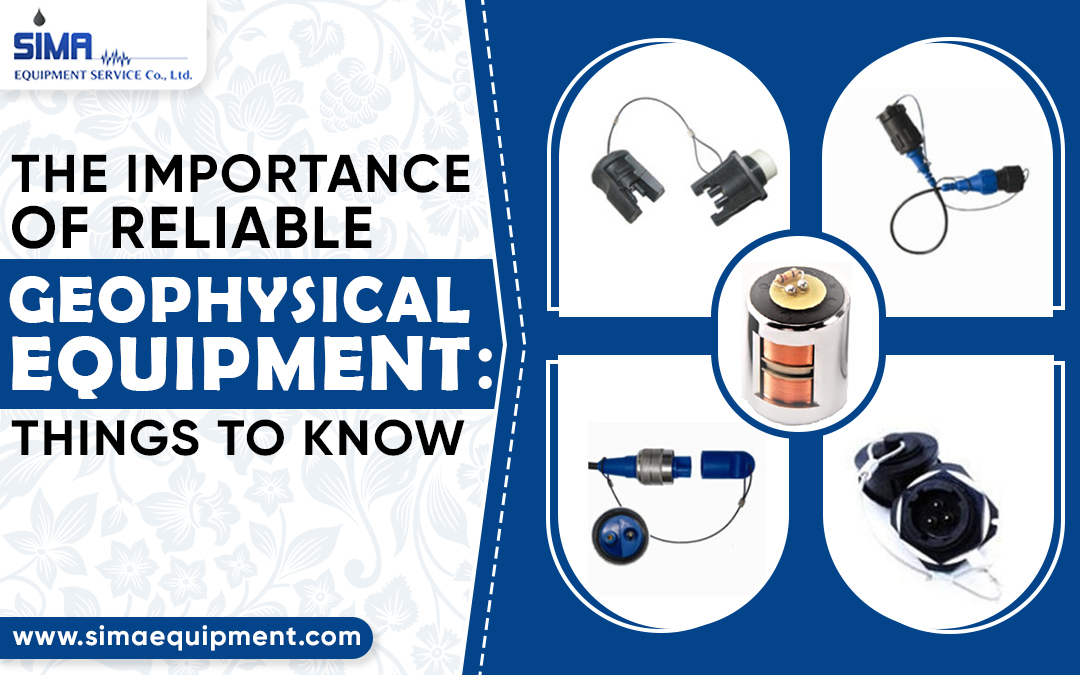geophone and hydrophone
The Importance of Reliable Geophysical Equipment: Things to Know
Have you ever wondered how scientists and geologists delve into the Earth’s mysteries, revealing the hidden treasures beneath our feet? The answer lies in geophysical equipment, a remarkable set of tools that provide invaluable insights into the subsurface. Whether analyzing seismic activity or exploring natural resources, reliable geophysical equipment plays a pivotal role in unraveling the Earth’s enigmas.
In this post, we’ll explore the importance of such equipment and the fascinating world it uncovers.
Unraveling the Earth’s Rhythms with Seismic Cable
One of the most crucial components of geophysical equipment is the seismic cable, a technological marvel that brings the Earth’s seismic activity to light. These cables are meticulously designed to capture vibrations caused by earthquakes or man-made seismic sources. The data collected from the seismic cable enables scientists to map underground structures, understand tectonic movements, and even predict potential hazards.
Precise Exploration of Natural Resources
Geophysical equipment plays a pivotal role in natural resource exploration. From minerals to fossil fuels, understanding the subsurface geology is essential to responsibly discovering and exploiting these resources. With the help of various geophysical tools like ground-penetrating radar, magnetometers, and resistivity meters, geologists can efficiently identify potential resource-rich areas, saving time and resources.
Non-Invasive Site Investigation
Traditionally, subsurface investigations required invasive methods such as drilling, which were expensive and environmentally disruptive. However, with modern geophysical equipment, non-invasive site investigations have become a reality. By employing tools like electrical resistivity imaging and electromagnetic surveys, scientists can examine the Earth’s composition without disturbing the surface, making it an eco-friendly alternative.
Geohazards and Disaster Mitigation
In a world where natural disasters can strike without warning, having reliable geophysical equipment is crucial for early detection and mitigation. By using seismic monitoring and ground stability analysis, scientists can assess the risk of landslides, sinkholes, and volcanic eruptions. This vital data empowers communities to take preventive measures, saving lives and minimizing damage.
Archaeology: Unearthing the Past
Geophysical equipment isn’t just limited to exploring the Earth’s structure; it has also become an indispensable tool in archaeology. Ground-penetrating radar and magnetometers assist archaeologists in locating buried structures, artifacts, and even ancient settlements. The ability to reveal history hidden beneath the ground has revolutionized the field of archaeology, leading to exciting discoveries.
Environmental Studies and Conservation
As our planet faces unprecedented environmental challenges, geophysical equipment proves to be a valuable ally in understanding the impact of human activity on the Earth’s subsurface. Scientists can make informed decisions about environmental conservation and sustainable land use by monitoring changes in groundwater levels, soil composition, and geological formations.
Engineering Applications
The importance of reliable geophysical equipment extends to engineering fields as well. Before constructing any infrastructure, such as buildings, roads, or bridges, conducting geophysical surveys helps engineers assess the ground conditions and identify potential issues. This proactive approach prevents costly surprises during construction and ensures the safety and longevity of the built environment.
The Bottom Line
Reliable geophysical equipments holds the key to unlocking the Earth’s hidden wonders. It empowers us to make informed decisions, safeguard lives, conserve the environment, and responsibly harness the Earth’s resources. So, the next time you hear about seismic cable or geophysical equipment, remember their incredible significance in our quest to unravel the secrets buried beneath our feet.

